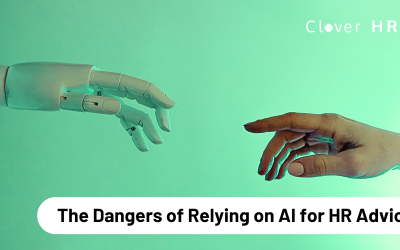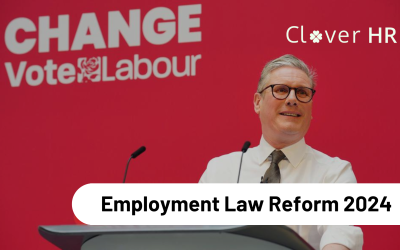As part of their success profiles, the Civil Service has developed a set of defined behaviors that are associated with job success. Knowing and understanding what these nine civil service behaviors are, and how to provide examples of each in competency-based questions is key. Read on for more advice on answering your interview questions.
Success Profiles
The Civil Service Workforce plan was introduced as a strategy to help attract and retain talented candidates. As part of this initiative, the Success Profile Framework was brought into force. Wanting to move away from the rigid competency-based assessment system for prospective employees, the success profiles allow for a more flexible approach – assessing candidates against a range of elements. The aim was to increase the Civil Service’s chance of finding the right person for the job while increasing the diversity and inclusivity of their recruitment process.
Under this criteria, candidates are given the opportunity to demonstrate their skill sets in relation to five key elements:
- Behavior – what actions do you take to achieve effective performance
- Strengths – what you perform well in and what motivates us to succeed
- Ability – your potential to meet or surpass the required standards
- Experience – how you have gained knowledge or mastery of a particular subject
- Technical – your specialist skills and qualifications in line with the role
The 9 Behaviors
With this success profile, the Civil Service have nine behaviors that make up this section of their success profile, including:
- Seeing the bigger picture
- Changing and improving
- Making effective decisions
- Leadership
- Communicating and influencing
- Working together
- Developing self and others
- Managing a quality service
- Delivering at pace
There are six levels for each ranging from Administration up to Director. When preparing for an interview where Civil Service behaviors will be assessed, it is key to understand why they are important.
How Civil Service Behaviors are Assessed?
Behaviors are defined for each job role and are specific to the level/grade of that role. An individual will be asked to demonstrate all the behaviors set for the role in which they are applying, but there are no expectations that examples will be given for all of them.
The Civil Service assess behaviors in a number of ways, including:
- Application form or CV
- At interview
- Presentations
- Psychometric testing
Competency Interview Question Examples
The interview assessment method is likely to be made up of competency-based interview questions. The main points discussed within this type of interview are:
- How you approach tasks and challenges
- How you will use your past experiences to relate to the job role
- How you will use the skills you have learned and apply them to the job role
- The elements contained within the person specification and how you can demonstrate these
Below are some examples for you to consider in your preparation.
Please can you tell us about a time when you worked in partnership with another team?
Seeing the Bigger Picture – This is an important behavior as it helps to show your understanding of how your role fits within the organisation and its overall objectives. It provides you with an opportunity to talk about your own recognition of the Civil Service’s priorities and the wider national interest.
To answer this question, you could talk about a time when you shadowed another team to understand how they work and the challenges they face, or, perhaps how you recognised that additional skills/knowledge were needed to achieve a goal.
Can you tell us about a situation when you had to deal with change?
Changing and Improving – Questions similar to the one above show that you are able to seek out opportunities to create change, make improvements, and provide feedback. It also allows you to suggest some new, innovative ideas for how you could improve.
Plan an answer drawing off your experiences; such as a move to a new way of working or a new location, and how you dealt with that. Perhaps you reviewed and implemented a process or system within your team.
Can you tell us about a time when you had to choose between a number of different options and how you approached it?
Making Effective Decisions – Questions of this nature help you demonstrate how you can both support and make expert decisions. Make sure you consider alternative options and discuss the implications and risks of the different options.
To answer this question, think about a time when there was more than one way forward – a problem you had to solve may be a good experience to draw on. Perhaps this is related to an issue that a customer had with an order, or has there been a time when there was an error within a piece of software? Another example may be that you’ve had to market a product and there have been a number of ideas to consider. How did you approach your decision?
Can you tell us about a time when you showed leadership skills and what you learned from the experience?
Leadership – This is important as it provides the opportunity for you to demonstrate the pride and passion you have for public service, and shows you value difference, diversity and inclusion. Share your drive for delivering the Civil Service’s shared vision.
Here you might talk about a time when you took on additional responsibilities to advance your knowledge or took on a leadership role as part of a project. If you have had the responsibility of managing someone else, you could talk about that experience, or it might be a role you have taken on outside of work, such as coaching a sports team.
Please tell me about a time when you communicated effectively with others.
Communicating and Influencing – This style of question allows you to show how effectively you can communicate and work in a team, whilst respecting the needs, responses and opinions of others.
Here you could talk about a presentation you have given or a time when you had to deliver a difficult message to someone. Another idea could be a time when you have explained something to someone to increase their understanding.
Please tell us about a time when you worked together with a colleague to achieve a goal.
Working Together – This question lets you show your ability to form effective partnerships and relationships with people both internally and externally, and from a range of backgrounds.
Here you could talk about a time when you noticed a colleague was struggling with their workload and you offered to help them, or perhaps you needed information from a colleague to get something completed and how you managed that situation.
Can you tell us about a time when you helped a colleague develop their knowledge?
Developing Self and Others – Demonstrating this behavior is important as it demonstrates your commitment to the continuous learning of yourself and your colleagues, and even to the wider organisation.
Here, you might talk about how you shared what you learned from a training event with your colleagues, or perhaps you are a whiz on a particular piece of software and you took on the role of training new team members.
Please can you tell me about a time when you dealt with a difficult client/customer situation?
Managing a Quality Service – These questions help you to talk about your ability to deliver service objectives to a high standard whilst considering diverse customer needs.
Here you could talk about a time when you resolved a customer complaint successfully, or how you managed to diffuse a situation that was escalating.
Please can you tell us about a time when you have had to re-prioritise your workload, and how you approached it?
Delivering at Pace – Here make sure you showcase your ownership in taking responsibility for delivering timely and high-quality results. Try to show an example that demonstrates your focus and drive.
Here you can weave in how you manage your workload generally as part of your answer. You might talk about how you look at your priorities based on risk and impact. An example could be that an urgent request has come in from a customer, or that an error has been identified which needs fixing. It would also be good to include how you manage the expectations of stakeholders as part of your answer.
Structuring your Answer
When preparing for your interview and thinking of examples for your answers, the STAR method is a really useful tool for ensuring the answers are well-rounded and concise.
The STAR Method
S – Situation
First, talk about the situation itself. Describe the context in which you were working or the challenge you were facing.
T – Task
Then, provide more information about the specific task, and what needed to be completed to resolve or address the situation. What were you asked to do, or what did you decide to do?
A – Action
Now is the time to talk about what your responsibility was in completing the tasks. Focus on the part you played specifically and how you contributed, rather than what your team or colleagues did.
R – Result
In this section, talk about what the outcome was, and what you achieved. Some people also add an additional “R” at the end for Reflection. Here, you could talk about what you felt went well, and if there would be anything you would change next time.
Read more advice about how to prepare for competency-based interview questions.
General Application Advice
Remember, when it comes to your application, the recruitment panel does not know you. Make sure you give them a full and rounded account of your experience and character, including any context that may be required. The STAR method will help you structure your questions in this way.
Your application and interview provide you with an opportunity to make a great first impression. Ensure you double-check any written work, such as your 250-word statement, for any spelling or grammatical errors. Attention to detail is key.
Another important thing to note, continuous improvement is an influential factor in the consideration of a candidate. If you can demonstrate an overall awareness of how a particular task in the past could have gone better and what you would now do differently, this can go in your favour. Being good at the job itself is one thing, but reflecting on past experiences and offering ways to improve the process shows your commitment to the organisation and those around you.
For more support with your recruitment process, contact us today.
FAQ
What is a Civil Service blended interview?
A blended interview simply means there will be a range of questions looking to assess your behavior/competency, strength as well as the range of your experience. These questions will also be accompanied by more traditional interview questions.
How do you demonstrate Civil Service behavior?
By structuring your interview questions with the STAR method, you will be able to effectively demonstrate a situation where you took action on a task and achieved a result. It is always good practice to come up with an example for each of the nine behaviors.
What are Civil Service behaviors scored out of?
During a Civil Service blended interview, the assessor will follow a rubric to score each group of ‘Success Profile’ questions. When it comes to behavior competency questions, these are marked out of seven.
What are Civil Service behaviors?
Now the Success Profile Framework has been introduced to help widen their recruitment search, Civil Service behaviors have become one of the five assessment categories. Within this category, are the following nine specific behaviors:
- Seeing the bigger picture
- Changing and improving
- Making effective decisions
- Leadership
- Communicating and influencing
- Working together
- Developing self and others
- Managing a quality service
- Delivering at pace
How long should Civil Service behavior answers be?
The overall interview aims to be approximately 1 hour long, with 50 minutes of questions. To fit in the required traditional and competency-based questions, answers are expected to be answered in approximately 2 minutes. Using the STAR method will help you ensure you have covered all the key points concisely.


